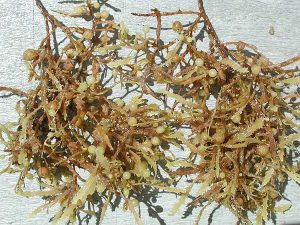What is Algae
Group of aquatic organisms that belongs to kingdom Protista are capable for doing photosynthesis are referred to as algae. They have been found in a various shapes and sizes. Some examples of algae that we seen in our daily lives are algal bloom, seaweeds and pond scums.
Algae are a diverse group of organisms which are mainly eukaryotes. However, these organisms may be unicellular or multicellular. These unique features plays a significant role in the economic importance of Algae.
Features of Algae
- The majority of algae known till now are mostly aquatic. They can be found in several habitats such as freshwater, saline water, moist rocks, soil etc. However, some algae can survive on surfaces outside water such as tree trunks, snowbanks, hot springs etc.
- Like higher plants algae are also capable of doing photosynthesis which means they are primary producers in an aquatic environment.
- Modes of replication of algae are vegetative, sexual, asexual or a combination of both. Vegetative reproduction includes fragmentation, cell division or fission, whereas in asexual reproduction naked or newly walled spores are formed.
- Sexual reproduction in algae is regulated by several environmental factors such as availability of inorganic nutrients, temperature, salinity. Therefore during unfavourable conditions sexual reproduction mainly occurs.
- One of the main differences between algae and plants is that the former does not have connective vascular tissues which facilitate the transportation of water and minerals, like the latter. Hence, algae absorb water via their cells and do not have structures like roots, leaves and stem-like plants
Types of Algae
There are several different types of Algae that are found in nature. These algae are classified on the basis of their colour. These are –
- Rhodophyta (Red algae).
- Paeophyta (Brown algae).
- Chlorophyta (Green algae)
- Pyrrophyta (Fire algae).
- Chrysophyta (Golden brown algae)
- Euglenophyta(Euglenoids)
- Xanthophyte(yellow-green algae)
Economic Importance of Algae are –
- Fish Culture – Some fishes such as Tilapia mossambica feed on certain types of algae. Cultivation of those varieties of algae has successfully facilitated fish culture in India.
- Treatment of Sewage Plant –Algae has proved to be very useful in the treatment of sewage plants. It is because they produce oxygen through the process of photosynthesis, which helps in the rapid decomposition of sewage.
- Used As Food for Human – Various species of algae have been used as food for a long time in some parts of the world. Algae are the rich source nutrients such as proteins, minerals, essential vitamins A, B, C, E, etc. For example, in Japan, a food item called ‘kombu’ is made from laminaria algae. Other varieties like monostroma and Porphyra are also used to develop food items. A type of seaweed named the Irish moss or carragheen which was widely used as an ingredient to make blancmanges.
- Cattle Fodder: Algae species like Laminaria saccharina, Pelvitia, Ascophyllum, etc. are also useful as fodder for cattle in countries like Scandinavia and Iceland.
- Natural Soil Fertilisers – It is used as a biofertilizer for crops, since they have the ability to improve the nitrogen content of the soil. Another agricultural importance of algae is that it also enhances the soil capacity to hold water. Bluegreen algae or cyanobacteria are commonly used as fertilisation.
- Medicinal Purposes – Algae being used for medicinal purposes by humans for a long time. Varieties of algae like sargassum and Laminariales were used for the treatment of goitre and glandular complications in many eastern countries. The component agar which was widely used as a laxative for the treatment of stomach disorders is extracted from algal species called agarphytes, gelidium, pterocladia etc. However, various researches has being carried out regarding other medicinal properties of ingredients in algae.

Img Source: Wikipedia
- Related Post:-
